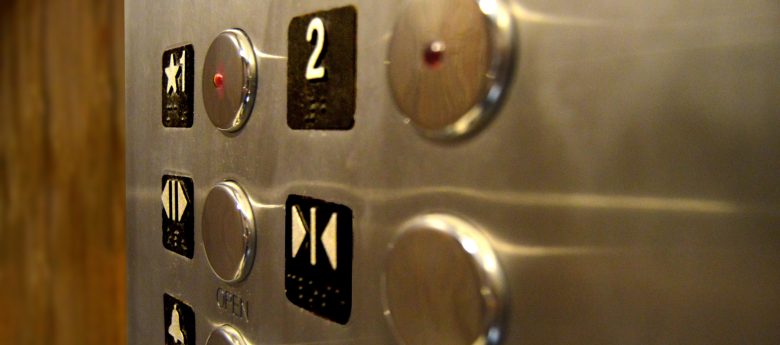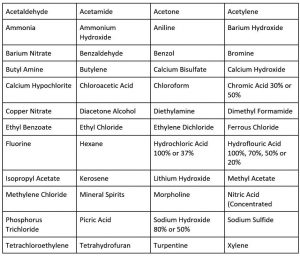How to Keep Elevators Clean: COVID-19 Edition

Did you know that you’re more likely to come into contact with bacteria on commercial elevator buttons than on a public toilet seat? While elevators may be the most convenient ways for tenants, employees and guests to travel up and down multi-story buildings, the small enclosure and heavy traffic allows for a quick buildup of illness-causing pathogens and germs. While that’s always been at least a mild inconvenience, the COVID-19 pandemic has raised the stakes for facility managers in how to effectively keep their elevators clean and disinfected.
While the uncertainty and lockdown protocols of the initial outbreak are behind us, the appearance of new COVID variants means that this will continue to be a concern for the immediate future. If you want to keep your passengers healthy and better prevent the spread of disease and bacteria within your facility, then consider the following tips and practices.
Basic Elevator Cleaning Practices
Understand that there’s a difference between cleaning and disinfecting. The Centers for Disease Control and Prevention (CDC) offers helpful definitions of both; here’s the general overview:
Cleaning requires water and either soap or detergent to remove dirt, spots and stains. While cleaning alone won’t kill viruses, bacteria or fungi, it can remove germs from surfaces and lower the risk of spreading.
Disinfecting, by comparison, uses chemicals to kill germs. It won’t necessarily clean a surface of streaks or grime, but it is the best way to remove contamination. However, to effectively disinfect a surface you will need to clean it before applying any disinfectant.
So, let’s start with cleaning.
How to Clean Hard/Non-Porous Surfaces – Wall Panels, Doors, Handrails
- Always use soap and water to effectively remove dirt and grime. If using any cleaning solvents, follow the manufacturer’s recommendations and consult your elevator service provider to be sure the products are safe to use.
- Never pour water on any electrical areas. Instead, apply the solution to a disposable paper towel or microfiber cloth and wipe the area down.
- Use a disposable paper towel or a microfiber cloth and an EPA-registered disinfectant. Opt for a non-abrasive, non-corrosive solution that is compatible with the surface material.
- When cleaning the interior walls, use non-corrosive cleaners that do not leave behind strong smells. You can also use specialized stainless steel cleaning agents to remove water spots and give stainless steel a clean and polished shine.
How to Clean Floors/Soft & Porous Surfaces – Mats, Carpets
- If the floors are tile or steel, sweep or vacuum the floor first and then follow the same cleaning recommendations for hard services.
- If there is carpet, vacuum thoroughly. Carpets can trap dust, germs and dirt, so it’s important to vacuum even if your carpet looks clean. For mats, wash in the laundry on the warmest setting.
- If you can’t clean the carpet or mat in the laundry, clean it with soap and water and a cloth. To deep clean, use a steam cleaner or an appropriate EPA-registered solution.
After cleaning all the surfaces of an elevator’s interior, it’s time to apply an appropriate disinfecting solution.
How Often Should You Clean Your Elevator?
How often you clean depends on the type of facility and level of traffic.
- An elevator in a small apartment building may only require a weekly cleaning to keep neat and low in pathogens.
- Elevators in a busy, high-traffic high-rise office building will likely need to be cleaned and disinfected on a daily basis.
- Elevators in high-traffic areas of medical facilities should be continuously disinfected throughout the day.
The season and climate will also determine how often you need to clean and disinfect. Dirt, salt and water are more likely to be tracked inside during fall and winter seasons, which also happen to be flu seasons. So, plan for more frequent cleaning and disinfecting during those months.
In the case of a variant outbreak, it could also be a good idea to increase the frequency of cleanings. According to the Center for Disease Control, it can take up to three days for the SARS-CoV-2 virus to fully degrade within indoor environments. While the exact possibility of surface transmission is difficult to determine, frequent disinfection of surfaces is considered key to prevent the spread of the virus.
Tips for Increasing Elevator Cleanliness Against COVID-19
- Always clean surfaces properly with soap and water before using disinfecting products.
- Follow the Environmental Protection Agency’s “List N” of registered disinfectants for approved chemicals that are effective against viruses like COVID-19. Make sure that the products you are using haven’t expired.
- Never spray chemicals directly onto a surface, as it could cause electrical damage. Spray the solution on to a fresh paper towel or a clean microfiber cloth and then wipe down the surface. Don’t use sponges when cleaning or disinfecting, as they can collect bacteria.
- Review the elevator manufacturer’s guidelines for cleaning. Some surfaces could become damaged if you use the wrong solution. Avoid using alcohol-based cleaners directly on elevator buttons, as they may damage the lacquered surfaces and cause some plastic components to become brittle over time.
- Be sure to also disinfect surfaces that may not be considered high-touch areas. Germs and bacteria can land anywhere in an elevator – doors, floors, wall panels, etc. To ensure that your elevator is as clean as possible, the entire elevator needs to be disinfected.
- Consider installing purifying and disinfecting technology, like ultraviolet light sanitizers that are designed specifically to kill bacteria, viruses and other germs on surfaces and in the air.
Cleaning and Disinfecting Chemicals to Avoid
For cleaning, it’s recommended to use ethyl alcohol or isopropyl alcohol of at least 70%. For disinfecting, refer to the EPA’s List N of approved COVID-19 disinfectants. In both cases you’ll want to avoid the use of harsh chemical cleaners that can either damage surfaces or produce lingering odors that could be harmful to passengers. Be on the lookout for these ingredients in particular:

This is not a comprehensive list of chemicals to avoid, so if you have any questions about your cleaning or disinfecting materials, be sure to reach out and ask an elevator service provider.
Tips for Social Distancing in Elevators
The CDC recommends practicing social distancing of at least six feet, but the small enclosures of elevators makes that a challenge. There are a few recommended steps that facility managers can take to make social distancing easier:
- Put up signs denoting safe distances and where passengers should stand.
- Put up signs denoting the recommended number of passengers per elevator.
- Provide touch-free hand sanitizers in the elevator or the landing areas.
- Look into new systems and tech such as voice activation controls, express service options for rides and elevator calling via mobile phone applications.
If you’re taking an elevator as a passenger, try to follow these recommended guidelines:
- Wear a mask when taking an elevator (or are just indoors in general).
- Don’t be afraid to wait for another elevator if one looks crowded.
- Don’t be afraid to ask other rides to wait if they try to get on a crowded elevator.
- Don’t lean against walls or rest your hands on handrails.
- Don’t directly touch the buttons with bare fingers, use cloth or gloves.
- Do be sure to sanitize or wash your hands after taking the elevator.
And, of course, passengers can choose to take the stairs if they’re able and the distance isn’t too long.
Ryan Hussey is VP of Operations for Stanley Elevator. As VP of Operations, Ryan oversees the field, construction and modernization teams. His resume includes over 10 years of first-hand experience in elevator field service, project management, surveying, estimating and warehouse operations.
